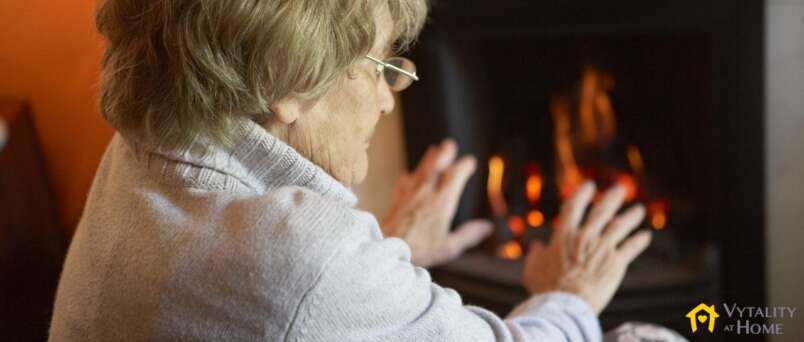Core temperatures: top tips on keeping warm and preventing frostbite
Once again, temperatures are set to plummet at the end of this week, with daytime temperatures falling to -15degrees and night-time temperatures as low at -20degrees by mid next week. That’s seriously cold!
This kind of weather brings particular challenges for those with medical conditions, the disabled and seniors, who may not be as mobile or as able to cope with temperature extremes.
We’ve complied a list of our top tips for staying warm and safe in our coldest of Calgary weather, with short explanations of the reasons behind our suggestions!
Cold to the core
Whatever your age, it’s important to keep your core body temperature at its normal 37 degrees. A decrease of just a degree or two in that core temperature raises the risk of the cold having harmful effects. All parts of your body need to be protected against the cold, and especially the effects of windchill. Keeping skin covered will not only help prevent damage to your skin, it will also help reduce overall loss of body heat, enabling you to maintain that core temperature.
The reassurance of home care
Our home care company offer families and seniors the reassurance of a 2 hour visit by one of our caregivers, whatever the weather! For seniors who may not be able to (or want to) leave the warmth and safety of their home, we offer a visit by a friendly face for companionship and a catch-up on the news, a game or activity that’s not just more TV, a little light housekeeping, doing a load of laundry or putting away a grocery delivery.
Call me
For families who may be many miles away, and unable to travel due to the weather themselves, a regular check-up visit by one of our team offers peace of mind that their loved ones are warm and safe. Our team are more than happy to help in person by putting through a video call to families from seniors who don’t use or struggle with technology.
Two (very) good reasons NOT to go out in extreme cold
For anyone of any age who wants to venture out, wearing the proper clothing and footwear is essential to reduce the very real risks posed by frostbite and hypothermia.
Frostnip and frostbite
Frostnip affects skin exposed to the cold, and can be reversed by getting inside in the warm and gently rewarming over 15 minutes or so. Frostbite is more serious, and comes from prolonged exposure to cold, and affects the top layer of skin and tissues. Severe frostbite affects skin, tissue and muscles and can also cause nerve damage.
The key to preventing frostbite is to cover all exposed skin with suitable clothing, including windproof insulated gloves, thermal socks in waterproof and thermal lined boots, windproof and weatherproof hats, and scarves or ski masks to keep as much of your face covered as possible. Limit exposure to the cold and wind to the shortest possible time, and consider taking taxis rather than buses or transit trains. and change as soon as possible if any clothing gets wet, especially socks and gloves.
Hypothermia
When that core temperature falls below 37 degrees by 1 or 2 degrees, you will have the symptoms of stage 1 hypothermia. You’ll feel cold, tired, shivery and may feel nauseous. To raise your body temperature again, move to a warm location, wrap yourself in a blanket, take off any wet clothing and have a hot drink that ideally doesn’t contain caffeine. If your body temperature falls by more than 4 degrees, you must move to somewhere warm, safe and call for emergency medical assistance.
Remember, you don’t have to be outside to get hypothermia. Ensure your home is kept warm and draught-free to maintain your body temperature. Wear an extra layer of thermal clothing inside too if you feel the cold or have a conditions such as diabetes. If you are sitting for extended periods, pop a blanket over your legs to keep your leg muscles warm, and take short strolls around your house to get some exercise and your blood circulating.
Please, no snow clearing!
To put it bluntly, clearing snow is dangerous for seniors in this extreme of cold. With the effects of cold and wind, you will quickly cool down even if doing physical labour like shovelling or pushing a snow blower. There is the added danger of slipping on compacted snow or ice, and the very real possibility that if you do fall, someone else might be put at risk trying to rescue you!
Instead, give us a call here at Vytality at Home. We have a network of professional trade Partners including snow clearance firms who can ensure your sidewalk and drive are clear of snow and ice, and who will clear paths and steps too on request.
More tips for seniors
For more tips for seniors on staying safe in snow and cold, see our three popular articles.
- How to stay safe in snow and sub-zero temperatures
- Winter has returned: home care whatever the weather
- Frostbite and hypothermia: seniors and extreme cold
Want to talk through home care in Calgary?
Contact us to discuss your requirements for yourself, your aging parents or other frail loved ones.




